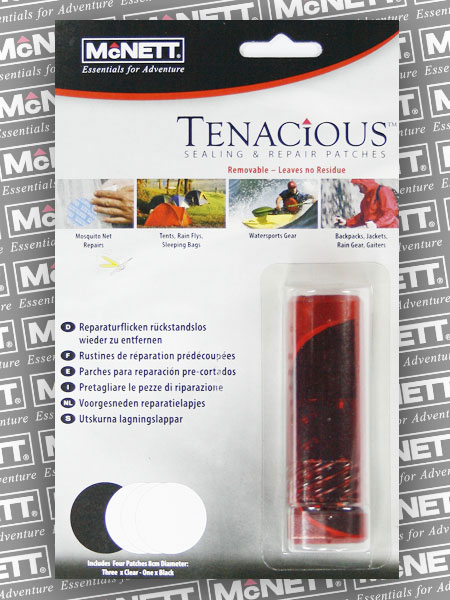Sleeping Mats for Camping12 February 2018 | Admin
Sleeping Mats for Camping – Choices and Repairs Lying on cold hard ground will conduct the heat away from your body and is potentially very uncomfortable too! Today there are many different sleeping mats available but the aim of all of them is to insulate you from the ground while offering varying degrees of comfort. All mats are now R rated. The higher the R rating, the higher the insulation property. Closed Cell Roll Mats: These are almost indestructible and are impervious to prickly ground. If you are just going to a festival for a couple of nights and will never camp again, the close cell roll mats that cost less than £10 will do the job. These are lightweight and are generally rolled or Z folded. However, the thicker more cushioned ones are pretty bulky. Therefore people generally have them rolled and strapped to the outside of their packs. Some of these mats also have a reflective surface to reflect your body heat back to you. Many D of E (Duke Of Edinburgh) students begin with these and they are good value for money. They are generally rectangular. However, as they are just foam they can be easily cut to length with a pair of scissors and shaped if required, saving a little weight and bulk. If you are only 130cm tall you don’t need the standard 180cm length mat! Semi Inflating: The Prolite range from Therm-A-Rest fall into this category. They come in a variety of sizes from X-Small to Large. As you unroll them, the foam cut outs inside them expand and they self-inflate. They only require a bit of puff to ensure they are firm. They have much more insulation and are far more comfortable than the closed cell mat. They take up less space in the pack but can be heavier and more expensive than the closed cell mat. Some people compromise by taking a closed cell mat and a small semi inflating mat to rest on top. This then will give extra padding and insulation under key areas like hip and shoulders for minimum bulk. Minimal backpackers will always save weight and bulk where they can and so use a smaller pad which will insulate the torso and then pop the rucksack or similar, under the feet at night as insulation from the ground. Air Beds: In the last few years these have become very popular with lightweight campers. They are reminiscent in look to the beach lilos from holidays by the sea. However, with new technical materials, these are light weight dreams of comfort! They may have longitudinal or horizontal baffles and many have a material included which reflects radiant heat and minimizes heat loss; an added bonus. One of the best known is the Neo Air by Therm-A-Rest. Exped also has a range, the Airmat UL and HL. There are many advantages to these new mats; they are very comfortable, light and have less bulk than the semi-inflating mats. However, they are generally more expensive and less robust. I had one fail on me the second night on the West Highland Way. I couldn’t locate the hole or faulty valve and didn’t want to carry it, so it ended up in the bin. I bought a £5 closed cell mat and folded it in half to have a little more comfort and put my rucksack under my feet at night. So if you are using an air bed style mat, we would recommend you choose your camping spot carefully and always carry a repair kit for it with you! These mats also require a fair bit of puff although some come with hand pumps, but of course this is something else to carry. However, there are a number of new innovations which are making it easier to inflate these mats. An example of this is the NeoAir XLite Max SV. They have a speed valve that pulls in surrounding air to amplify your breath. They inflate in half the usual time and similarly, deflate very quickly. Repair at home It is much easier to try and repair an air bed or semi inflating mat at home than out on a trip. If you suspect there is a leak from a hole but are not sure where it is, the first job is to locate it. This is best done by half inflating the mat, filling a bath (easier than in a sink or bucket) and then putting the mat, section by section, under the water to see where bubbles escape. Dry and mark with tailor chalk or similar. However, do make sure not to submerge a matt with down inside for added insulation. If you do it will possibly damage the down and will be very difficult to dry. If you have a good idea where the hole is and just need confirmation, a useful trick is to use a little washing up liquid in some water and dab it on the spot. Bubbles should appear where the hole is as you put the mat under pressure. Wipe it clean before you repair it. Depending on the size of the hole you can buy patches that can be cut to size such as McNett Universal Repair Kit. Make sure the area is clean and dry. Next apply the Seam Grip to the area making sure to cover the hole and spread 6mm beyond. Apply the patch and leave to dry flat overnight. In the field, if you know where the hole is you can just put some Tenacious Tape over it as a temporary measure. Then repair it fully when you return home. Normally repairs using Seam Grip cure best in warm humid conditions over several hours. However, you can buy an accelerator that reduces the cure time down to about two hours. An example of this is McNett Cotol 240 Cure Accelerator. You simply add a few drops to the Seam Grip, ideal if you are on a trip, but it does mean you have something else to carry! The other place to check for leaks on the air bed is by the valve. Sometimes small holes appear over time as the valve is continually twisted. Generally these too can be sealed using Seam Grip. Ultimately your choice of sleeping mat will come down to what you are doing, what level of comfort you require and what you can afford.
|



